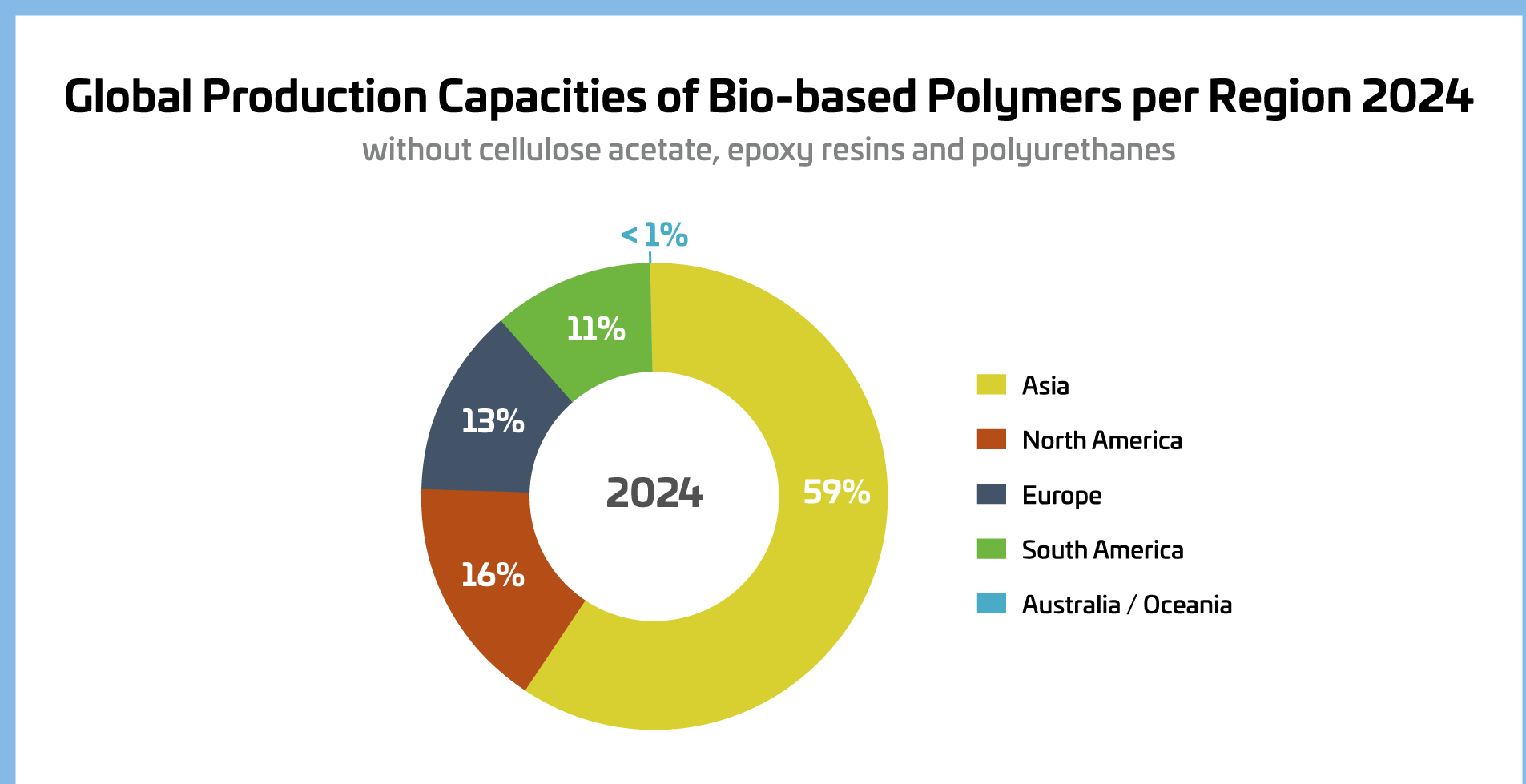Bio-based polymer market projected for 13% annual growth to 2029

The global bio-based polymer market is set to grow at a 13 per cent CAGR through 2029, with Asia and North America leading expansion, reveals a Nova-Institute report. Production capacity reached 4.2 million tonnes in 2024, representing just 1 per cent of total polymer output, but the rapid adoption of bio-based materials signals a shift towards sustainability.
Cellulose acetate (CA), widely used in yarns and fibers, accounted for 26 per cent of total bio-based polymer production. Polytrimethylene terephthalate (PTT), another key fiber polymer, represented 6 per cent, while polylactic acid (PLA), commonly blended into sustainable textile applications, contributed 8 per cent. The textile sector remains a significant consumer of bio-based polymers, with fibers making up 27 per cent of total demand.
Despite increasing production, challenges remain, particularly in Europe, where market growth lags due to inconsistent policies. Meanwhile, Asia and North America are expanding their footprint, with PHA and PEF capacities expected to grow 65 per cent by 2029.
With major brands pushing for greener materials, bio-based polymers are gaining traction in textiles, offering sustainable alternatives for yarn and fabric production.
